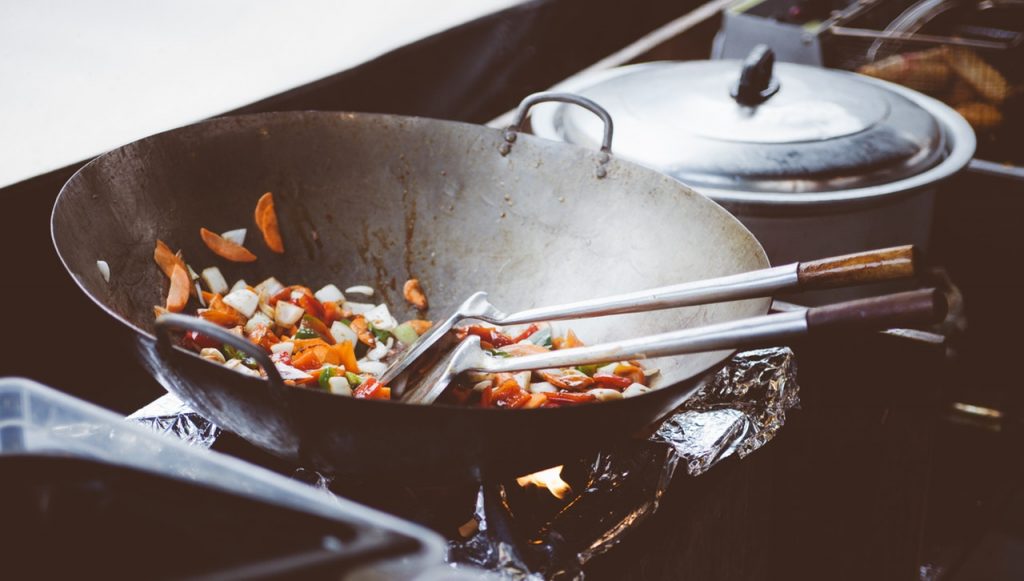In today’s abundance of choice, it’s hard to make the right decision, even with something as trivial as cooking pots. But using the right cookware and bakeware is much more important than you’d think.
If you have any aspiration to eat delicious self-made food, know that having a quality, non-stick pan or pot will change the flavor of your food, trust me.
Then comes a health issue– different materials poise different concerns that can affect our body’s toxicity.
That information only should make you put more effort into choosing the right cookware.
Now, we’ll see what are the most common materials used in today’s market and evaluate them for food yumminess and health safety.
Nonstick Pans
They are nonstick because manufacturers coat them with a layer of chemical that doesn’t make the food stick to the bottom.
This chemistry is repellent – it pushes away other molecules.
Those chemicals may be hard to remember or pronounce (polytetrafluoroethylene (PTFE)). Therefore, we use a more known name trademarked since the 40s by DuPont – Teflon.
What’s the problem with Teflon?
While it seems a useful chemical as it repels other ingredients (and thus prevents food from sticking to the pan), it proves to be not as stable as advertised.
The chemical that’s a part of Teflon coating is Perfluorinated Chemical or PFC. It makes the coating resistant to stains, water or grease.
But PTFE is not heat resistant, resulting in overheating, turning into Perfluorooctanoic acid (PFOA) and producing toxic fumes proven to kill small house birds and cause flu-like symptoms in people.
If you use Teflon coated cookware, and can’t ditch it to transfer to more healthier choices, use these tips to better handle this chemical’s instability:
- use lower temperatures when cooking in Teflon pans
- don’t spend too much time over a pan to avoid inhaling fumes
- open the window or use or turn on an exhaust
Aluminum Cookware
Aluminum is a material known for high thermal conductivity and steel like strength. That’s how aluminum became a big part of many kitchens.
Lightweight, durable, and easy to clean, this cookware was a standard for many years.
Aluminum has been connected with many health issues, including Alzheimer’s. When the cookware has an aluminum core that is encapsulated with other, safer materials, it should not be a problem – as long as aluminum does not come in touch with your food.
The best alternative to aluminum cookware might just be anodized aluminum cookware. Crazy, right?
Well, the chemistry of metal can change, so anodizing the aluminum makes it more stable and not harmful.
Plus, your eggs won’t stick to the pan! Omellette, anyone?
Ceramic Non-Stick Pots
Ceramic cookware is the new trend and can be found anywhere. While ceramic is man-made material, it comprises a few organic substances that occur in nature, such as carbon. Ceramic is a flame-hardened clay.
The idea of using natural elements like clay, along with the aesthetic appearance and convenient nonstick surfaces of this cookware has propelled ceramic pots into kitchen heaven.
Not to mention this cookware does not contain harmful chemicals like PTFE or PFOA.
The nonstick ability is derivated from a Thermalon glaze which is a sand derivative.
There has been controversy with ceramic cookware because of nanoparticles and heavy metals leaking, but there is not enough research that backups the claim this cookware are harmful.
The fact that the ceramic is glazed rather than coated makes it protected from leaking of inner materials.
However, there is a lot of difference between a 100% ceramic pot or a metal pot coated with ceramic, so keep that in mind when cookware shopping.
In sum, Ceramic is the good (especially if not just coated, rather 100% ceramic inside out), Aluminum is the bad (anodized aluminum is better), but Teflon is the ugly (releasing toxic fumes).
So, keep that in mind next time you go cookware shopping.
